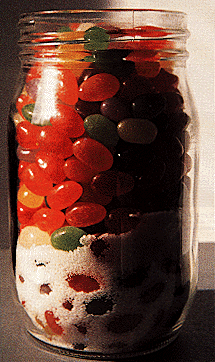
Think of a single particle of pigment as a single snowflake. What the ink manufacturer starts with is more like a snowball, composed of millions of individual flakes compressed together. The grind reduces those collective pigment particles-from either an agglomerate (particles randomly attached to each other) or an aggregate (particles attached side by side)-with the goal being to attain unattached particles of pigment in the snowflake range.
The scale for gauging grind is from zero to eight (or higher), eight being the finest grind typically available, and most appropriate for garment-printing requirements. As far as determining the grind of a given ink, the problem is that the industry-standard test is dependent on viscosity. If one has a certain viscosity pigment dispersion with a grind of seven, for example, and reduces that viscosity, it may well be transformed to a grind of eight. Unfortunately, manufacturers do not correlate between viscosity and grind.
The other important physical characteristic of the pigment is its aspect ratio or shape. Aspect ratio means the length vs the width of a particle of pigment, expressed as a ratio. Blue inks, for example, tend to have needle-like, relatively large particles. At the other extreme are white inks, wherein pigment particles tend to be almost perfectly spherical and extremely small. So the blues tend to be very thixotropic, meaning that it takes less energy to thin them, and longer for them to recover. Look at it this way. Let's assume you scatter a handful of toothpicks. The more you scatter them, the longer it's going to take you to restructure them, to gather them up into the uniform handful in which they started. Whereas, if you scatter marbles, you simply scoop them up and they're more or less automatically restructured.
Information on pigment grind is typically available from the manufacturer. If the grind is not eight (or higher) at the viscosity that is supplied, the user should be skeptical. At lower grinds, the pigment is not adequately dispersed (see Variable 23: PIGMENT DISPERSAL), and the dispersion will take place in the screen. You'll see color streaks, inconsistent color (particularly with transparent inks) and a major change in printing characteristics, over the course of the press run.
White inks, because their pigment particles are spherical, tend to be very dilatant (expanding), or "shear thickening." As you apply shear to them (either while mixing or with the squeegee blade), the nature of those white pigments sets up resistance to the shear. Put simply, the shape of the pigment particles greatly influences the ink's reaction to the force that is applied to it. Thus, white, even if it's a grind of eight, will typically force you to print more slowly. If you try to print too fast, it will build up resistance and won't want to transfer through the screen. It literally gets thicker.
 An
ink's "shortness" is revealed by the way in strings out (or
not) from an ink knife or squeegee blade.
An
ink's "shortness" is revealed by the way in strings out (or
not) from an ink knife or squeegee blade.